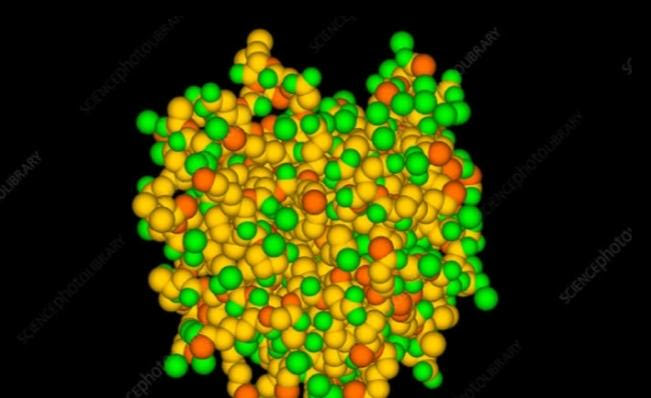
Give examples of derived proteins?
Answer
462.3k+ views
Hint: On the basis of constitution, the proteins are of two types- simple proteins and conjugated proteins. The simple proteins are made up of only amino acids e.g. globulins. The conjugated proteins contain a prosthetic group in addition to amino acids e.g. nucleoproteins. Conjugated proteins are more complex than simple proteins.
Complete answer:
Before proceeding to the answer, we should know about the derived proteins. Derived proteins are those proteins that are obtained from simple or conjugated proteins by partial or complete hydrolysis. The action of acids, enzymes or alkalis on simple proteins results in the formation of derived proteins. As they are derivatives of proteins, they are named so. The intermediates formed due to hydrolysis are less complex than the previous one i.e. the complexity of proteins decreases with progressive intermediates formed. The digestion of proteins takes place with hydrolysis. Derived proteins are of two types on the basis of change in structure of protein molecules during hydrolysis- primary derived proteins and secondary derived proteins.
Proteins that are obtained by only slight change in the structure and properties of protein molecules are called primary derived proteins. There is no or little breakdown of peptide bonds due to hydrolysis. Examples of primary derived proteins are- fibrin from fibrinogen and myosan from myosin.
Proteins that are obtained by excess modification in the structure and properties of protein molecules are called secondary derived proteins. The peptide bonds undergo progressive hydrolytic cleavage. Examples are proteoses and peptones.

Note:
Many different amino acids join to form polypeptides. The proteins are formed by one long polypeptide or many polypeptides together. Thus, amino acid is the basic unit of proteins. The peptide bond joins the two amino acids. The proteins give amino acids when subjected to hydrolysis. Twenty different amino acids are present in plants and animals.
Complete answer:
Before proceeding to the answer, we should know about the derived proteins. Derived proteins are those proteins that are obtained from simple or conjugated proteins by partial or complete hydrolysis. The action of acids, enzymes or alkalis on simple proteins results in the formation of derived proteins. As they are derivatives of proteins, they are named so. The intermediates formed due to hydrolysis are less complex than the previous one i.e. the complexity of proteins decreases with progressive intermediates formed. The digestion of proteins takes place with hydrolysis. Derived proteins are of two types on the basis of change in structure of protein molecules during hydrolysis- primary derived proteins and secondary derived proteins.
Proteins that are obtained by only slight change in the structure and properties of protein molecules are called primary derived proteins. There is no or little breakdown of peptide bonds due to hydrolysis. Examples of primary derived proteins are- fibrin from fibrinogen and myosan from myosin.
Proteins that are obtained by excess modification in the structure and properties of protein molecules are called secondary derived proteins. The peptide bonds undergo progressive hydrolytic cleavage. Examples are proteoses and peptones.

Note:
Many different amino acids join to form polypeptides. The proteins are formed by one long polypeptide or many polypeptides together. Thus, amino acid is the basic unit of proteins. The peptide bond joins the two amino acids. The proteins give amino acids when subjected to hydrolysis. Twenty different amino acids are present in plants and animals.
Recently Updated Pages
Master Class 12 Business Studies: Engaging Questions & Answers for Success

Master Class 12 Economics: Engaging Questions & Answers for Success

Master Class 12 English: Engaging Questions & Answers for Success

Master Class 12 Maths: Engaging Questions & Answers for Success

Master Class 12 Social Science: Engaging Questions & Answers for Success

Master Class 12 Chemistry: Engaging Questions & Answers for Success

Trending doubts
What is meant by exothermic and endothermic reactions class 11 chemistry CBSE

Which animal has three hearts class 11 biology CBSE

10 examples of friction in our daily life

One Metric ton is equal to kg A 10000 B 1000 C 100 class 11 physics CBSE

1 Quintal is equal to a 110 kg b 10 kg c 100kg d 1000 class 11 physics CBSE

Difference Between Prokaryotic Cells and Eukaryotic Cells




